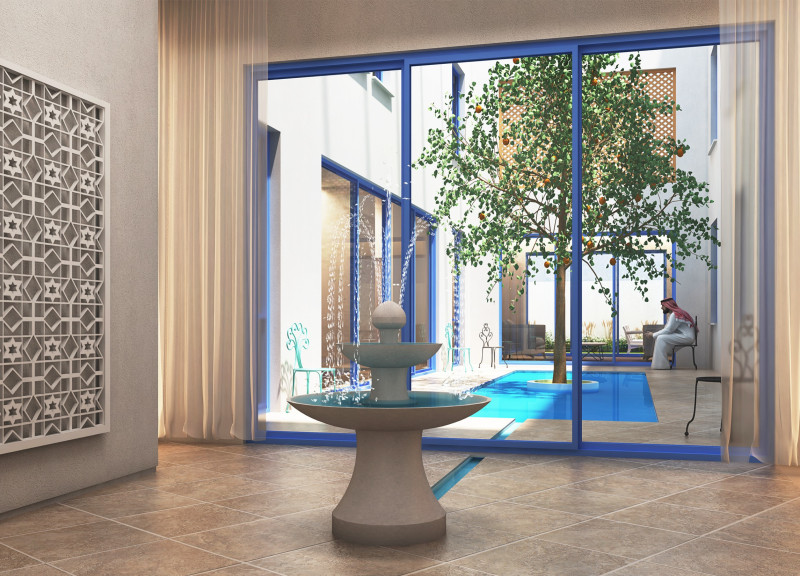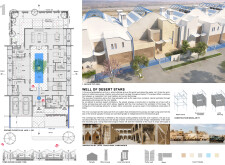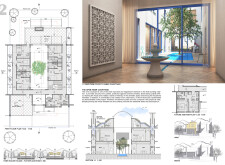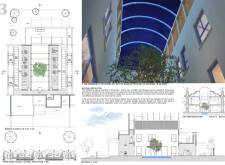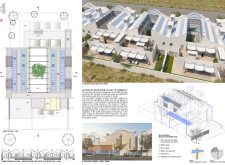5 key facts about this project
### Project Overview
Located in Dubai, the "Well of Desert Stars" residential development integrates contemporary design with traditional Arabian architectural elements. Its intent is to harmonize modern living with the environmental and cultural context of the region, focusing on sustainability and community cohesion. Central to the design is an open courtyard, traditionally significant for providing shade and privacy in the harsh climate, which enhances social interaction and natural ventilation throughout the dwelling.
### Spatial Organization
The ground floor layout facilitates seamless movement within living spaces, all oriented toward the central courtyard that features a tranquil pool, reinforcing the theme of water as a source of life and aesthetic pleasure. Functional areas, including the kitchen and living spaces, are strategically positioned for direct access to this outdoor space, promoting an interconnected living experience. The upper levels are designed with flexibility in mind, allowing for future modifications to accommodate changing family needs while preserving the architectural integrity of the original structure.
### Materiality and Sustainability
Materials selected for the project reflect local and sustainable practices. Concrete and steel are utilized for their durability and structural integrity, while prestressed concrete minimizes weight without compromising strength. Infill panels made of lightweight materials enhance insulation, and solar panels are incorporated for energy efficiency and water harvesting. The façade features natural stone and plaster finishes, echoing regional building traditions. Additionally, the design includes advanced strategies for natural ventilation and innovative water management systems, underlining a commitment to environmental responsibility. Native vegetation in the landscaping further supports local biodiversity and improves residents' quality of life.


